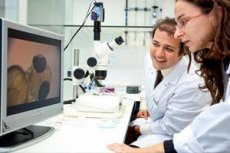New publications
Our brains can switch between worlds
Last reviewed: 02.07.2025

All iLive content is medically reviewed or fact checked to ensure as much factual accuracy as possible.
We have strict sourcing guidelines and only link to reputable media sites, academic research institutions and, whenever possible, medically peer reviewed studies. Note that the numbers in parentheses ([1], [2], etc.) are clickable links to these studies.
If you feel that any of our content is inaccurate, out-of-date, or otherwise questionable, please select it and press Ctrl + Enter.

Scientists are sure that there is a connection between the afterlife and our world, and it is not that far away – experiments have shown that it is located in our brain.
The scientists' unusual study was prompted by the idea of why some people, during clinical death, have visions of tunnels with a bright light at the end, angels, deceased relatives, etc.
After preliminary research, experts found that people who were in a coma or lost consciousness also saw something similar.
The author of the scientific work, Stephen Laureys, and his colleagues monitored the work of the brain. Among the subjects were also unconscious patients, for whom activity was characteristic in the "temporoparietal junction", which, according to Laureys, connects the two worlds - before and after death.
Dr. Laureys' colleagues conducted their own experiments and confirmed his findings. Notable results were achieved by Swiss neurologist Olaf Blanke, who examined a woman suffering from epileptic seizures. Dr. Blanke probed the woman's brain with electrodes and accidentally touched the temporoparietal junction. Later, the woman said that during the procedure she seemed to leave her own body and watched what the doctor was doing.
Similar results were observed by Dr. Dirk Ridder, who also affected the temporoparietal node of a patient (an elderly man suffering from tinnitus ). The man also said that he flew out of his own body and observed everything that was happening around him from the outside. As the patient later stated, he “flew out” for literally 10-15 seconds, but this time was enough for doctors to detect increased activity in the temporoparietal node, by the way, the ringing in the ears never stopped.
Evidence of the existence of the soul in humans was sought 8 years ago. Dr. Sam Parnia, who with his colleagues examined more than a thousand patients who returned from the "other world", set a goal to record the moment the soul leaves the body. In the wards, scientists installed shelves above the ceiling, where they placed certain images, all the pictures were located in such a way that they could not be seen from the bed - the scientists believed that if the soul does leave the body, then patients who returned from the "other world" would be able to tell what they saw there, including about the images under the ceiling. Dr. Parnia's research dragged on for an extra 2 years, and preliminary conclusions were published only in 2014.
As a result, scientists examined more than 2 thousand people - all of them had cardiac arrest, but 330 of them were “resurrected”.
140 patients reported seeing things after death, and another 26 noted that they observed their own bodies from the outside, but Dr. Parnia did not say whether they saw pictures.
One of the patients, who was in a state of clinical death for 3 minutes, described with maximum precision what happened in the ward after his death (the sounds of the equipment, the actions of the doctors, etc.).
According to Sam Parnia, 20-30 seconds pass from the moment the heart stops before the brain switches off, due to oxygen starvation, memory impairment occurs, but the fact that patients described what was happening to them even a minute later indicates the existence of the soul separately from the brain. Now scientists cannot say exactly what happens to the soul next, perhaps it simply fades away, but the fact that it lives and remembers everything that happens around the body for at least another 3 minutes is a fact.

 [
[